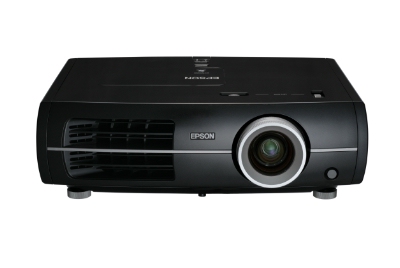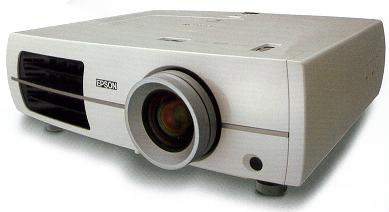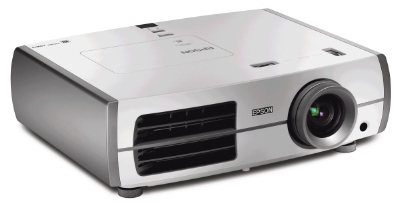LCD technology used to have a bad rap for home theater projectors due to issues with contrast, screen uniformity and the so-called "screen door effect" (SDE) caused from having too wide a gap between pixels on the LCD imaging panel. But 3LCD chip manufacturer EPSON is committed to eliminating these weaknesses with yet another improvement in their already excellent D7 LCD chip set.
We reviewed their Powerlite Home Cinema 1080 UB (for "Ultimate Black") model earlier this year and found that it offered excellent 1080p performance, particularly for its relatively low price. But Epson wasn't content to leave well enough alone as they have made some pretty major enhancements to their own 3LCD light engine and used CEDIA Expo in Denver as the launching ground for a new flagship projector to feature this new technology.

One inherent problem with earlier LCD projector designs was that in its default state, an LCD chip lets light pass through it. This means the projector's light engine has to work hard to generate blacks by blocking as much light as possible using tiny little shutters. The new chip design works the opposite way - its default state has all of the shutters engaged meaning it's actually much easier to produce good black levels (and excellent contrast) than it used to be. This translates to an LCD projector with a rated native contrast ratio of 6,000:1 (according to an Epson product manager we spoke with at CEDIA Expo) and a dynamic contrast ratio of a whopping 75,000:1.
The new flagship projector which includes this technology will go by two different model numbers: the Powerlite Pro Cinema 7500 UB for the pro installation market (under $5,000) and the Powerlite Home Cinema 6500 UB (under $4000) for the consumer market. The 7500 UB will include an extra lamp, ISF certification, three year warranty, a ceiling mount and a black housing whereas the 6500 UB will come with just the installed lamp, a two year warranty, a white case and no mount.

Both projectors feature a brightness rating of an acceptable 1600 ANSI Lumens (the same as the current 1080 UB models), so they'll be able to produce a watchable image with some amount of ambient lighting in the room. Both models will also include an on-board Silicon Optix Reon-VX video processor for enhanced upconversion and deinterlacing of standard definition and high definition interlaced material to high definition 1080p progressive output. For those interested in doing a "fixed height" installation with a 2.35:1 screen, only the Pro model will support this via an optional Panamorph anamorphic lens and motorized sled and a "horizontal stretch" aspect ratio.
Another unique new feature which Epson designed with input from imaging expert Kevin Miller is something typically found only on high-end broadcast monitors. The Pro Cinema 7500 UB will feature Color Space selection, which allows a user to select between the three industry color space standards – SMPTE-C for standard definition (Rec.601), HD (Rec. 709) for high definition, and EBU to match the European PAL video standard. These settings allow the end user to match the color space to the specific content being viewed for the most accurate colors possible.

For customers who want 1080p resolution at a more affordable price, Epson will offer the 6100 (consumer) and 7100 (pro) models at a more reasonable price point - as low as $1999 for the model 6100. These projectors will not include Epson's "UB" (Ultimate Black) technology, but they do still feature a respectable 18,000:1 dynamic contrast ratio and 1800 Lumens of brightness as well as other image enhancement technologies.
Exact pricing on all models is expected to be available later this fall with the projectors themselves shipping in November (6100/7100) and December (6500/7500).
More information: www.epson.com